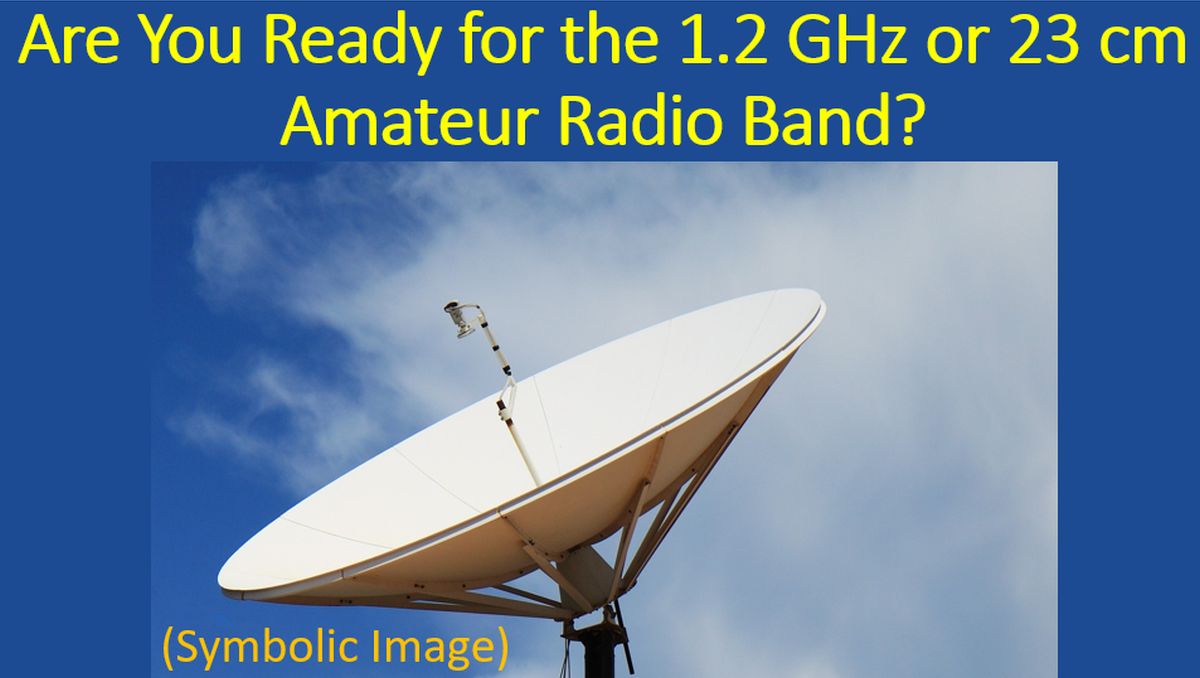Are You Ready for the 1.2 GHz or 23 cm Amateur Radio Band?
Are You Ready for the 1.2 GHz or 23 cm Amateur Radio Band?
National Frequency Allocation Plan 2022 mentions 1 240-1 300 MHz (shared with other services) as the allocation for Amateur Radio services in India for the 1.2 GHz or 23 cm band. But I am yet to see any posts in our local WhatsApp groups about activity on 1.2 GHz band. There are quite a few posts on activity on that band from the United States and Europe on Twitter or X. This is inspite of the fact that we have quite a few active on the Qatar Oscar 100 Geostationary Amateur Radio satellite in this region. QO 100 has uplink in 2.4 GHz Amateur Radio band and downlink on 10.4 GHz band. QO-100 India Morning Net gets 10-15 checkins every day.
May be because we do not have an active satellite to work on 23 cm band at present. Even activity on the 70 cm Amateur Radio band in this region is mostly on LEO and MEO Amateur Radio satellites, except for the very few 70 cm repeaters out there. Earlier, AO 92 had an L-Band downshifter, which had uplink in 1.2 GHz band and and downlink on VHF. Though AO 92 had come back to life twice for a few days recently, the L/v downshifter was not active.

Had a look at Repeater Book listing for 1.2 GHz repeaters. I could find 10 repeaters operating on the 1.2 GHz band in Florida alone. Coming to Texas, there were 17 repeaters on the 23 cm band. California seems to have the highest number of 1.2 GHz repeaters, at 159, though some of them are off the air and some are private. These results are from a random check and I don’t claim these as the maximum numbers out there! There are ten 23 cm repeaters listed from United Kingdom and 102 from Germany. Though I could not see any 23 cm repeaters from VU land, I was happy to see eight listed for 70 cm category, of which five are shown to be active.
23 cm Amateur Radio band is also one of the popular bands for EME (Earth-Moon-Earth) or Moonbounce. One advantage of 1.2 GHz band over the 70 cm and 2 m band for Moonbounce is that the change in polarization which occurs on lower bands when they pass through the ionosphere, known as Faraday rotation, is lesser on 23 cm band. This reduces the difference in polarization between the transmitted signal and the reflected signal, making them more intelligible.
1.2 GHz band was opened for Amateur Radio at the 1947 International Radio Conference in Atlantic City in the United States, the very year in which our VU land celebrated its independence! Currently the satellite sub band or amateur-satellite (Earth-to-space) allocation for 23 cm is 1260–1270 MHz segment. In emergency situations, when the conventional 2 m and 70 cm are overloaded, having 23 cm capability could be an advantage. An example cited is the use of 23 cm band by Radio Amateurs in Norway for emergency contacts to transmit real-time images from a remote command centre back to the main search and rescue headquarters.
It is also important to protect the important radionavigation satellite service primary allocation on the 1.2 GHz band from interference due to Amateur operations by restricting to reasonable power levels as aptly pointed out by Timothy Ellam KC, President, International Amateur Radio Union.
ICOM IC-9700 which is quite popular among Amateur Radio Satellite operators covers 1.2 GHz band in addition to the more popular 2 m and 70 cm Amateur Radio bands. Many Amateur Radio operators in VU land also have this radio. Antennas for 1.2 GHz band have much smaller dimensions than 2 m and 70 cm antennas. It is possible to have more number of elements with higher gain and directivity because of this, at convenient sizes. Remember that there are many who achieve the prestigious Moonbounce communication in Amateur Radio on the 23 cm band.
Dish antenna is another option for Moonbounce on 23 cm. A dish with 3 m diameter has been recommended, though some have been successful with 2.2 m sized dish for 1.2 GHz as well. DJ-G7T Alinco, tri-band handheld radio also covers 1.2 GHz band. It is quite cheap compared to IC-9700, but it is more expensive than dual band handheld radios and as expected, power output is much less compared to IC-9700.